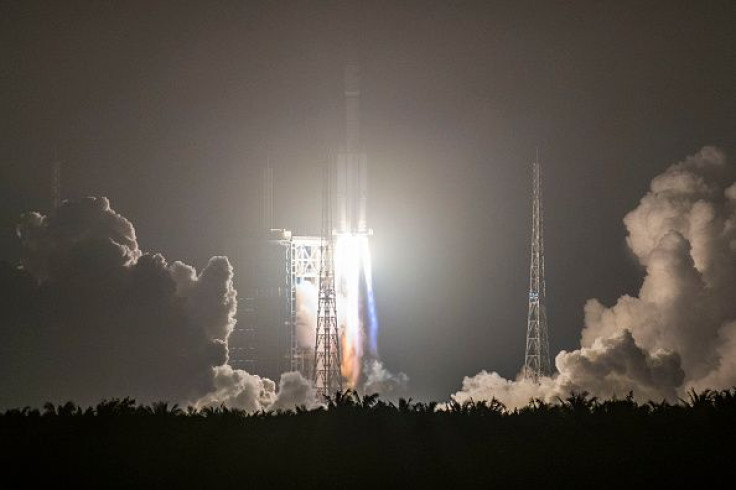China's First X-Ray Space Telescope To Study Black Holes, Gravitational Waves

China launched its X-ray telescope into orbit Thursday, marking another milestone for the nation that is trying to catch up in the space race.
Xinhua, the state’s official news agency, reported that the Hard X-ray Modulation Telescope, which China is calling Insight, will focus on black holes and pulsars to better understand how they work, including how black holes evolve and how pulsars could be used to help spacecraft navigate. It will also study gamma-ray bursts, which are short and incredibly bright explosions of gamma-ray light that are released when matter collapses into a black hole.
Read: Will NASA’s Next Space Station Be Made From Recycled Parts?
Those gamma-ray bursts are in part so crucial because they can tell us more about the gravitational waves — predicted by physicist Albert Einstein’s theory of general relativity 100 years ago but only confirmed recently — that are essentially ripples linked to distortions in the fabric of space, coming from huge events like black holes that orbit one another.
Insight launched on a Long March-4B rocket from a location in the Gobi Desert in northwestern China, Xinhua said, and is now orbiting about 350 miles above the Earth. Chinese scientists are expecting the satellite to improve space technology in their country.
“We are looking forward to discovering new activities of black holes and studying the state of neutron stars under extreme gravity and density conditions, and physical laws under extreme magnetic fields,” lead scientist Zhang Shuangnan said, according to international news service Agence France-Presse. “These studies are expected to bring new breakthroughs in physics.”
China has been making moves into space in the last few months. In April, the nation used a rocket to launch its first cargo spacecraft to dock with Tiangong-2, its new orbiting space laboratory, which is unmanned. The maneuver was a step toward China’s goal of having a crewed space station within the next five years.
And last month China announced it had students living in a year-long simulation of a space colony in Beijing, part of the country’s preparation for sending astronauts to the moon. The “Yuegong-1,” which translates to “lunar palace,” will be taking turns in isolation in the habitat, the size of a small apartment. Xinhua reported that there were sleeping compartments, a bathroom, areas for raising animals and plants and a room for waste treatment inside the pretend space colony. The students are meant to treat the situation as if they really are in isolation on another planet, solving problems on their own, growing their own food and recycling their waste.
The lunar palace is the second experiment of its kind for China, which previously isolated volunteers in a simulator for a much shorter time period.


China is not the only one that is seeking to catch up to the others that have been in space for decades — most recently New Zealand is also getting into the game. An American company called Rocket Lab run by a New Zealander last month announced its goal of launching about a rocket each week from the island nation in the southern Pacific Ocean.
Read: SpaceX Wants to Launch 4,500 Satellites for Worldwide High-Speed Internet
Rocket Lab has already sent up its lightweight Electron rocket from a peninsula in northeastern New Zealand and plans to start commercial launches later this year to haul cargo like satellites into low Earth orbit.
Its goal of 50 or more launches from the country each year would outpace the United States.
“So far, it’s only superpowers that have gone into space,” Simon Bridges, New Zealand’s economic development minister, told the Associated Press last month. “For us to do it, and be in the first couple of handfuls of countries in the world, is pretty impressive.”
© Copyright IBTimes 2024. All rights reserved.











